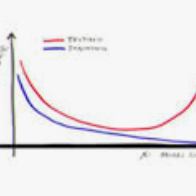A machine learning model is calibrated if its predicted probability for an outcome matches the observed frequency for that outcome conditional on the model prediction. This property has become increasingly important as the impact of machine learning models has continued to spread to various domains. As a result, there are now a dizzying number of recent papers on measuring and improving the calibration of (specifically deep learning) models. In this work, we reassess the reporting of calibration metrics in the recent literature. We show that there exist trivial recalibration approaches that can appear seemingly state-of-the-art unless calibration and prediction metrics (i.e. test accuracy) are accompanied by additional generalization metrics such as negative log-likelihood. We then use a calibration-based decomposition of Bregman divergences to develop a new extension to reliability diagrams that jointly visualizes calibration and generalization error, and show how our visualization can be used to detect trade-offs between calibration and generalization. Along the way, we prove novel results regarding the relationship between full calibration error and confidence calibration error for Bregman divergences. We also establish the consistency of the kernel regression estimator for calibration error used in our visualization approach, which generalizes existing consistency results in the literature.
翻译:暂无翻译




